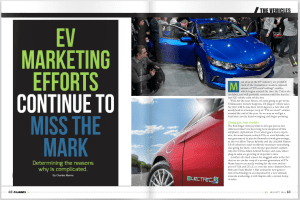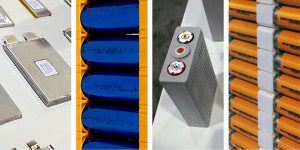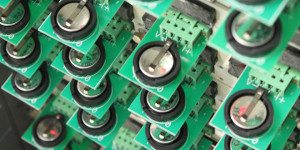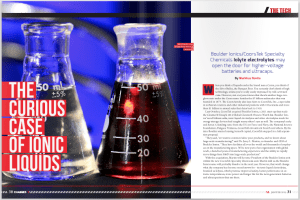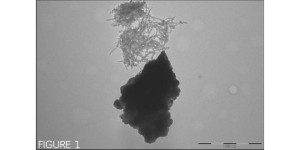Most of us in the EV industry are probably tired of the mainstream media’s constant stream of “EVs aren’t selling” articles, which began around the time the Volt made its debut, and will probably continue until the day the last ICE vehicle rolls off the line. Well, for the near future, it’s only going to… Read more »
Search Results Found For: "lithium metal"
Navigant Research: $14 billion worth of advanced batteries shipped in 2014
Demand for advanced batteries, which are used not only in electrified vehicles, but also in consumer electronics and grid-management applications, continues to grow at a healthy pace. According to a new report from Navigant Research, the industry shipped 53.3 GWh of batteries in 2014 – that represents more than $14 billion in sales, a 7.1-percent… Read more »
New ads for next-gen Chevrolet Volt attack Nissan LEAF, Toyota Prius
The 2016 Chevrolet Volt is a tour de force of engineering, a substantial step forward over its predecessor (see our cover story in the current issue of Charged). However, some EV industry observers fear that unless GM follows up on the technical improvements with some meaningful marketing, an area in which EV-makers have fallen short… Read more »
Navigant: Global market for automotive Li-ion batteries will quadruple by 2024
The battery business is booming, and a new report from Navigant Research aims to flesh out the picture with some facts and figures. “Advanced Energy Storage for Automotive Applications” predicts that the global market for automotive Li-ion batteries will grow from $7.8 billion in 2015 to $30.6 billion in 2024, an almost fourfold increase. Total… Read more »
Toyota Research team reports critical advance in electrolytes for magnesium batteries
Still looking for a replacement for lithium? How about magnesium? It’s divalent, so it can displace double the charge per ion (i.e., Mg2+ rather than Li+). It’s much more abundant than lithium, and more stable. However, researchers investigating Mg-ion batteries have run into several limitations, including anode/electrolyte incompatibility. Now a team at the Toyota Research… Read more »
Wildcat Discovery Technology creates new experiments to accelerate battery research
The pulse of the industry: Wildcat Discovery Technology is at the forefront of battery research, solving problems and accumulating insight. When Charged wants to catch up on the newest trends in cutting-edge battery technology, there are a few companies we turn to for insight. At the top of the list is a group whose high-speed… Read more »
Chemists discover key reaction in sodium- oxygen batteries
Chemists at Canada’s University of Waterloo have described a key mediation pathway that explains why sodium-oxygen batteries are more energy-efficient compared with their lithium-oxygen counterparts. “Our new understanding brings together a lot of different, disconnected bits of a puzzle that have allowed us to assemble the full picture,” says Professor Linda Nazar. “These findings will… Read more »
LG Chem Power CEO: We’re the Li-ion leader for PEVs because of material science
Q&A with LG Chem Power’s CEO: Dr. Prabhakar Patil on how the company became a Li-ion battery front-runner, the economics of building batteries, and why it spends little energy on what comes after lithium. Among Tier 1 automotive suppliers of lithium-ion cells, LG Chem is off to a clear lead, based on the number of announced… Read more »
Ionic liquid electrolytes may open the door for higher-voltage batteries
The curious case of ionic liquids: Boulder Ionics/CoorsTek Specialty Chemicals Iolyte electrolytes When you think of liquids under the brand name Coors, you think of the Silver Bullet, the Banquet Beer. You certainly don’t think of high technology, unless you’re really easily impressed by cold-activated cans. However, not everyone knows that there’s another huge conglomerate under… Read more »
Snail shells inspire new battery design
Nanostructured electrodes in Li-ion batteries have several advantages, including shorter distances for charge-carrying particles to travel and a high surface area that provides more active sites for electrochemical reactions to occur. However, working with nanoscale materials is tricky – due to their tiny size, they can be hard to control and hold in place. To… Read more »




